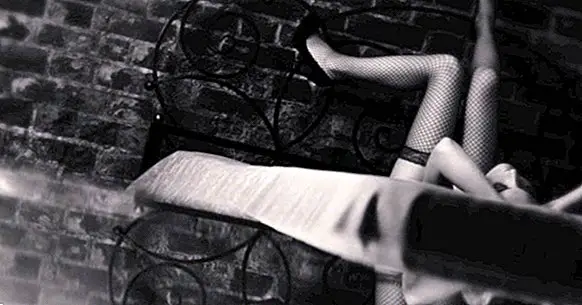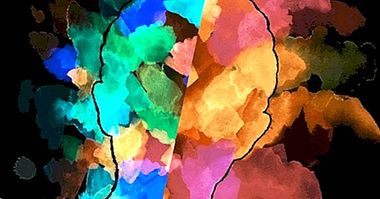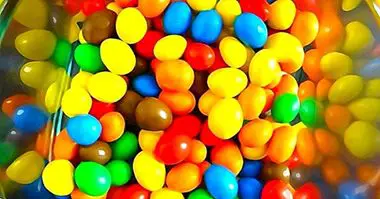Libido: how did Sigmund Freud define this concept?
Nowadays the term "libido" is very widespread in the colloquial language ; in this context, this concept is understood as a synonym for sexual desire or impulses.
However, the definition of libido created by Sigmund Freud it does not only refer to sexuality but it is more broad , and it is essential to understand the rest of his theory.
- Related article: "Sigmund Freud: life and work of the famous psychoanalyst"
Defining the libidinal energy
According to the definition proposed by Sigmund Freud, the libido is the energy of the drives or instincts that direct all forms of behavior . Initially he affirmed that the libido always had a sexual character and that the rest of impulses were secondary to that of reproduction; however, as he developed his theory Freud included other types of energy in this concept.
In classical Freudian psychoanalysis the term "libido" is generally used to refer to an affect (or emotion) linked to a particular drive , which can be associated with the It or the Self. Later on, this author called the impulses of these classes "pulsión de vida" or "Eros", and added another different type of drive: death or Thanatos.
The amount of libido available to the psyche of a given individual is limited. Therefore, mental processes compete with each other to produce, and some have a very high cost, and may interfere in others; For example, Freud claimed that the defense mechanism known as repression is especially expensive for the mind.
- Related article: "The Theory of the Unconscious of Sigmund Freud (and the new theories)"
The concept of libido according to Carl Jung
Carl Gustav Jung, founder of the school of analytical psychology, identified the concept of libido with psychic energy in general . It would be the manifestation of vital processes, which often takes the form of a desire. Its origin would be the opposition between dualities in the mind, like the one we mentioned between the id and the superego.
Although the definitions of both authors are similar, the Jungian conception of the libido is one of the main points of collision between Jung and Freud : while for the father of psychoanalysis the libidinal energy is basically sexual, Jung and the authors who followed his steps believed that the libido has a much broader and undifferentiated character.
Jung also disagreed with Freud in the conception of the mind as a product of the biological substrate of the organism. Therefore, we can say that the ideas of the most famous of his disciples are characterized by an even more marked mentalism; In this sense it is important to take into account the great influence that religion exercised over Jung.
- Maybe you're interested: "The 31 best Psychology books you can not miss"
The id, the libido and the pleasure principle
The libido is contained in the Ello, one of the three structures of the mind described by this author. While the id represents the most basic and primitive part of our being, the ego and the superego arise throughout development to satisfy the demands of the organism and the environment and to provide us with a moral conscience, respectively.
The id is governed by the pleasure principle; This means that it directs the behavior towards obtaining immediate pleasure. Furthermore, this part of the psyche depends on unconscious processes, so we often do not know what impulses motivate our behavior.
For its part, the Self deals with obtaining gratification taking into account the reality principle. This means that the I contains the libidinal energy of the It so that their instincts can be satisfied in an adequate way in relation to the rules and demands of the environment, which includes aspects such as long-term reasoning and social judgment.
The superego serves as a model of behavior for the Self. In this structure, norms and internalized social values reside through interaction with other members of the same social group, particularly parents and other authority figures. Thus, the libido of the It pushes the I to obtain pleasure while the Superyó prioritizes the morality.
The stages of psychosexual development
According to Freud's theory, the libido is expressed in different ways depending on the stage of development in which the individual is at a given time. Thus, this author described a series of evolutionary phases that would be common to all human beings; each of them is related to a specific erogenous zone in which the libido would be focused.
Freud described 5 stages of psychosexual development: the oral phase, in which pleasure is obtained through the mouth; the anal phase; the phallic phase, characterized by the Oedipus complex; the period of latency, in which the libido is redirected to non-sexual activities through sublimation; and the genital phase, which corresponds to the arrival of puberty and sexual maturity.
Sometimes the libidinal energy stagnates in a stage of the previous development to the current one; Freud referred to this as "fixation." This phenomenon, origin of the malaise and of psychopathology, could derive as much from the frustration of the libidinal needs in the stage in question as from its excessive satisfaction, which can be equally problematic.
- To learn more: "The 5 stages of the psychosexual development of Sigmund Freud"



















